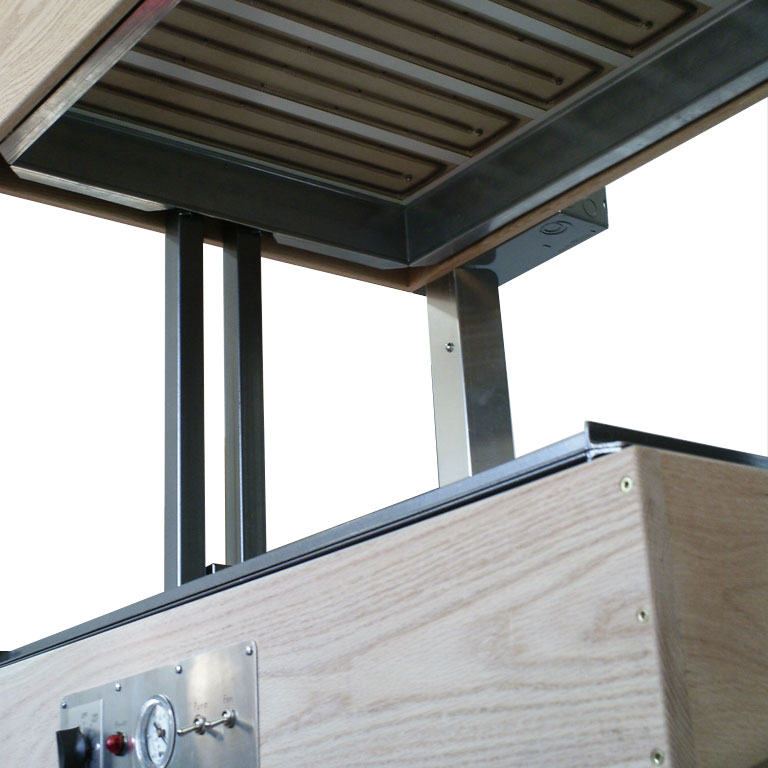Oven kit 220v Proto-Form
Availability Update:
We have resumed shipping heating element kits but may still run into occasional supply shortages. We made some changes and now sell these kits as bare element kits only. This means they no longer include high temp connecting wire, terminals and jumpers. The prices have been lowered and it will be cheaper for you to buy those materials directly from the sources provided in the kits.
Proto-Form oven kit requires the purchase of our plans.
Introducing our new “Fast Heat” modular heating elements for the Proto-Form machines. These new elements offer the exact same performance but with a faster warm up and much lower cost than the previous Cal-rod based kits. They will retrofit easily into the existing design. These new heating elements are supplied as “Bare Element Kits” without high temp connecting wire, jumpers and terminals. Retrofit instructions are included in your plans and sources for additional wiring and terminals will come with the element kits.

The “Fast Heat” elements consist of a special coiled resistance wire mounted directly onto a ceramic fiber board.
These new elements are modular “Tiles” measuring 6 x 24 inches and putting out 1200 watts each on 220 volts. The Proto-Form oven kits consist of 4,6,or 8 heating tiles (depending on machine size). These elements are supplied in kit form with pre-cut ceramic fiber board, nichrome heating coil and hardware.
You must use the supplied template and drill the mounting holes, then stretch the coil and fasten to the board with the hardware provided. Adjacent tiles are connected with high temp connecting wire and terminals (Not supplied but sources are included)
Frequently Asked Questions
“Cal-Rod” tubular style vs coiled wire elements.
Do these work as well as the old Cal-Rod based oven kits?
These are functionally identical but they heat up faster and are much cheaper. They fit in the same place with the same heat output and power consumption.
How long does a coiled Nichrome element last?
Not really sure!,.. I’ve been selling this type of coiled element for my Hobby-Vac machines since 1996 with no reported failures yet. How long does a toaster last, I’ve got one that’s 20 years old? If assembled carefully with no nicks in the wire and not subjected to repeated movement or vibration, they last very long and are cheap to replace.
Are these elements safe?
Not if you touch them, but neither is an open flame or burner on your stove. The oven box is grounded so a broken wire will trip a breaker if it touches something metal. Treat it like you would any appliance. Use common sense, don’t modify the design and follow the instructions carefully.
Are they more work to install?
About the same as the old oven kits, you will spend more time assembling the elements, but the oven box is much easier to make. No special skills required, just follow instructions.
They look kind of cheap, why didn’t you use something cool like Quartz tubes or ceramic panel elements?
The short answer is cost vs benefit. A coiled resistance element is far cheaper than all other options and if designed correctly, functions the same. Remember, ALL electric heaters have the same nichrome wire hidden inside somewhere.
Can I just use “Hardi-backer” cement board from Home Depot?
Hardi Board is not a high temp material like our element kits so it will likely end up cracking. We are working on ways to use it differently to prevent this but until we find a solution the ceramic fiber board used in our kits can handle direct contact with the heating coils.
